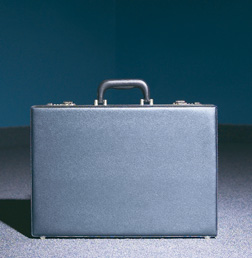Resilience is about adapting to change. Covid-19 has epitomised a threat which demands significant change and one way we are responding to the new resiliency normal can be seen in anticipated revisions to the workplace, writes Robert Hall of business body Resilience First.
Resilience First, with the UK charity the Foundation for Science and Technology, is holding a webinar on ‘Skills resilience in a changing world’ on Wednesday, October 21. Speakers include: Lord Willetts, former Coalition Government Minister of State for Universities and Science, and Chairman of the Foundation for Science and Technology; Stephen Phipson CBE, CEO, Make UK; Austen Okonweze, Deputy Director, Engagement & Planning, Industrial Strategy, BEIS; and Lizzie Crowley, Senior Policy Adviser for Skills, CIPD. More about their webinars at www.resiliencefirst.co.uk.
While the nature of work by, say, key workers may dictate location, others, especially those in offices, are likely to witness new sites and flexible working arrangements. Technology has greatly facilitated this shift. Some are beginning to question whether the traditional office is ‘obsolete’: others have indicated that there is a need to promote a ‘culture that values and supports remote working’. (See for example the Welsh Government announcement of September 13) What is clear is that it is proving to be more difficult to get people back to the office than to disperse them in the first instance because of the pandemic.
Companies have adopted different strategies but according to a survey in The Times of August 29, ‘three-quarters of the UK’s biggest employers are looking at a permanent shift to flexible working’. Twitter has taken the boldest work-from-home (WFH) stance, telling employees they can keep working remotely permanently. On the other hand, Bloomberg is reportedly offering a stipend of up to £55 a day, to encourage its employees back to its office in London. Most businesses now expect home or remote working for a significant proportion of their employees, accelerating a trend of around 5pc that existed before the pandemic. Besides the continuing fear of Covid, many staff have gained a positive taste of working from home and thereby avoiding often a lengthy and costly commute. Behavioural change takes two to three months to become established and neither vaccines nor stipends are likely to undo entirely the shift in distributed working which may also help make staff healthier.
The WFH trend does, however, raise legitimate questions of recovering costs of energy and internet access, insurance to cover accidents in the home, the provision of hardware that complies with health and safety rules, employment rights with management at a distance, and the application of remote monitoring and reporting. The shift illustrates the other danger that the new practices applied to a distributed workforce may have got ahead of regulation and legislation, both which take time to work through the usual channels. What is certain is that the new rules on social distancing have necessitated a reduction in the occupancy levels around the office. With a 2m separation distance (2.6m from head to head), room capacity has been reduced on average by 25pc from previous levels, meaning that some people need to work from home at least some of the time and roster their appearance in the office at other times (for example, Aviva is planning a capacity of around 10pc of its office space while 3i is anticipating that 70pc of its staff can be accommodated).
Part-time occupancy (one to four days per week) may help to overcome the genuine concerns of creativity by association, team building and training, and corporate bonding. But the ‘optional office’ will not dispel the temptation of companies to reduce office size and thereby rental costs: some suggest a fall of at least 10pc in the stock of office space in big cities. This will have knock-on effects for guarding and security contracts.
Another solution that may gain traction is adoption of collaboration hubs or satellite offices that will avoid long commutes into major cities. This trend is being seen indirectly in the relative busyness of regional towns to the detriment of major cities like London. It is reported that retailers on high streets in towns and suburbs are suffering less from a downturn in trade than large cities because people are remaining closer to home on a regular basis. This will not help the economic damage from the collapse of major city-centre services, including rail and tube. It may also not help secure city pay and allowances – why should companies pay benefits for staff wanting to work out of town?
There are differing reports on whether WFH enhances productivity. There is anecdotal evidence that time saved on commuting is spent on extra work, while the fear of redundancy during the pandemic has encouraged those additional hours. Some may be distracted or frustrated by the home environment but others may relish the quieter environment with fewer work interactions. According to a survey by Colliers, 73pc of people working from home felt that their productivity was the same or had increased while 76pc thought their work/life balance had improved.
The attractiveness of the high-tech, hot-desking, open-plan office is seemingly on the wane with a proportion of office workers feeling the time is right for change. What is for sure in that the office will never be quite the same again. We need to grasp the opportunities and manage the change in a domain which has largely remain unaltered for decades. The contest over the future of the workplace has only just begun.









